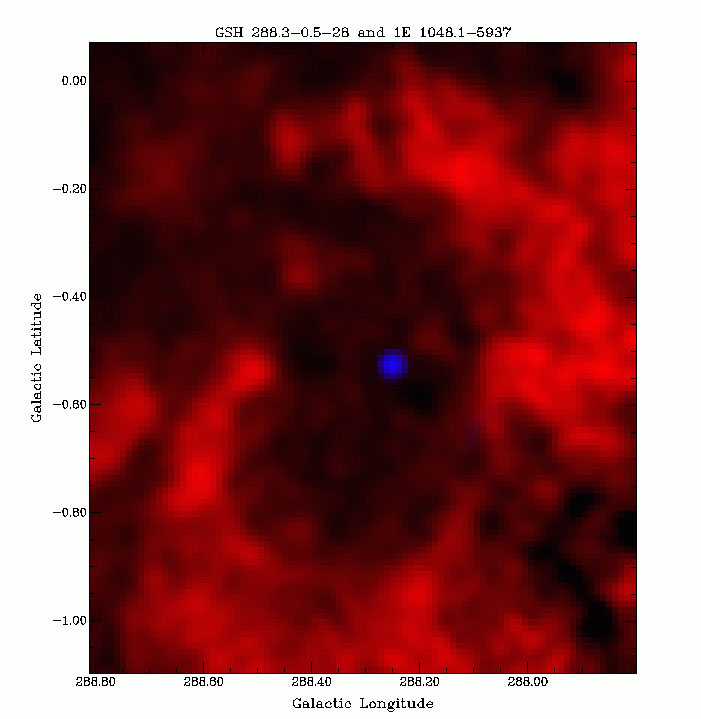Image List
-

A 110-by-75 light-year-wide hole in the neutral hydrogen gas surrounding a magnetar shows that a massive star gave birth to this powerful magnetic object. Magnetars are the rare "white tigers" of stellar astrophysics, comprising only 1% of known pulsars. In this image, red shows the neutral hydrogen gas mapped with CSIRO's Australia Telescope Compact Array and Parkes radio telescope, while blue represents Chandra X-ray Observatory data showing the magnetar. The bubble in the hydrogen was cleared out by a superstrong wind from the magnetar's progenitor star.
ATNF/CXC/B. Gaensler (CfA) -

This artist's concept shows a magnetar - a neutron star with a super-strong magnetic field, represented by the lines in this illustration. A team led by Bryan Gaensler (CfA) has linked magnetars to massive stars, showing that the biggest stars produce the strongest magnets when they explode as supernovae.
Robert S. Mallozzi (UAH/NASA MSFC)